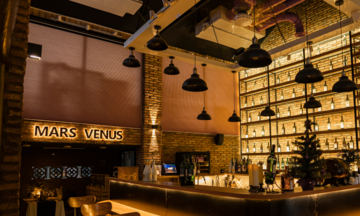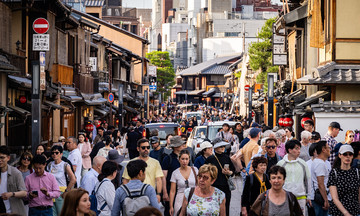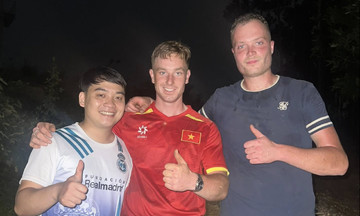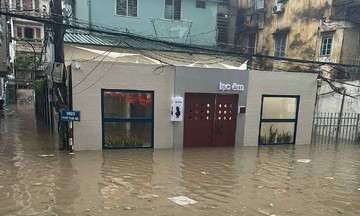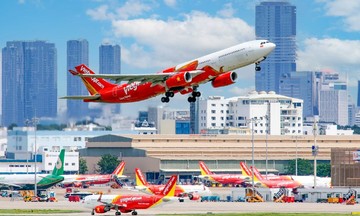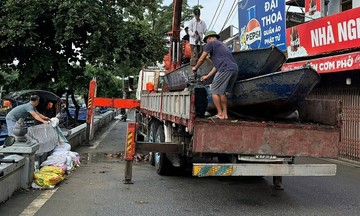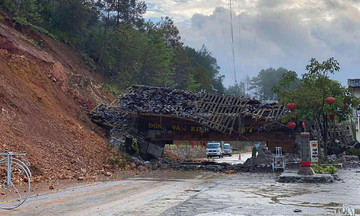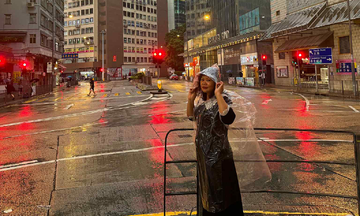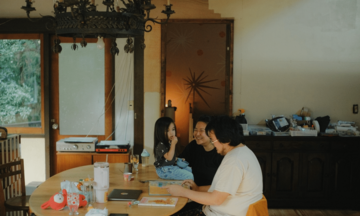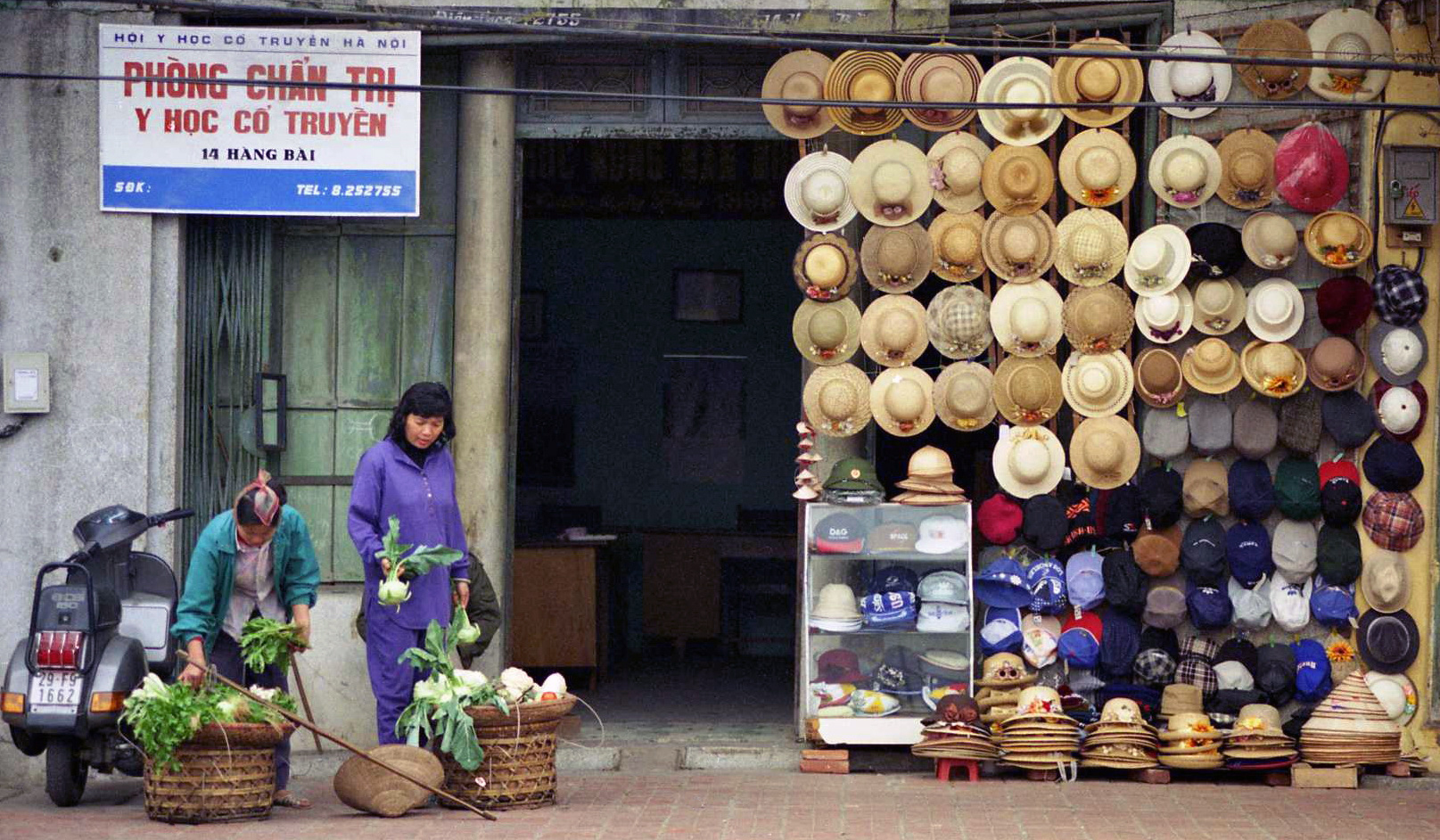 |
The moment a mother cycled past on Trang Tien Street caught the photographer's lens in 1998. In the background is a public telephone booth, now completely gone. Kobayashi recalls that, at the time, people had to buy cards at the post office to make calls. Photo: Yuichi Kobayashi |
First arriving in Hanoi in 1995, Japanese photographer Yuichi Kobayashi spent considerable time exploring its streets, documenting everyday life. He recalls the old quarter as relatively quiet, not yet a common destination for international tourists due to the limited number of direct flights to Noi Bai Airport.
The photo above depicts a hat shop on Hang Bai Street, alongside the familiar sight of street vendors. During his most recent return in 2022, he was surprised to find the shop and the building almost entirely unchanged after nearly three decades.
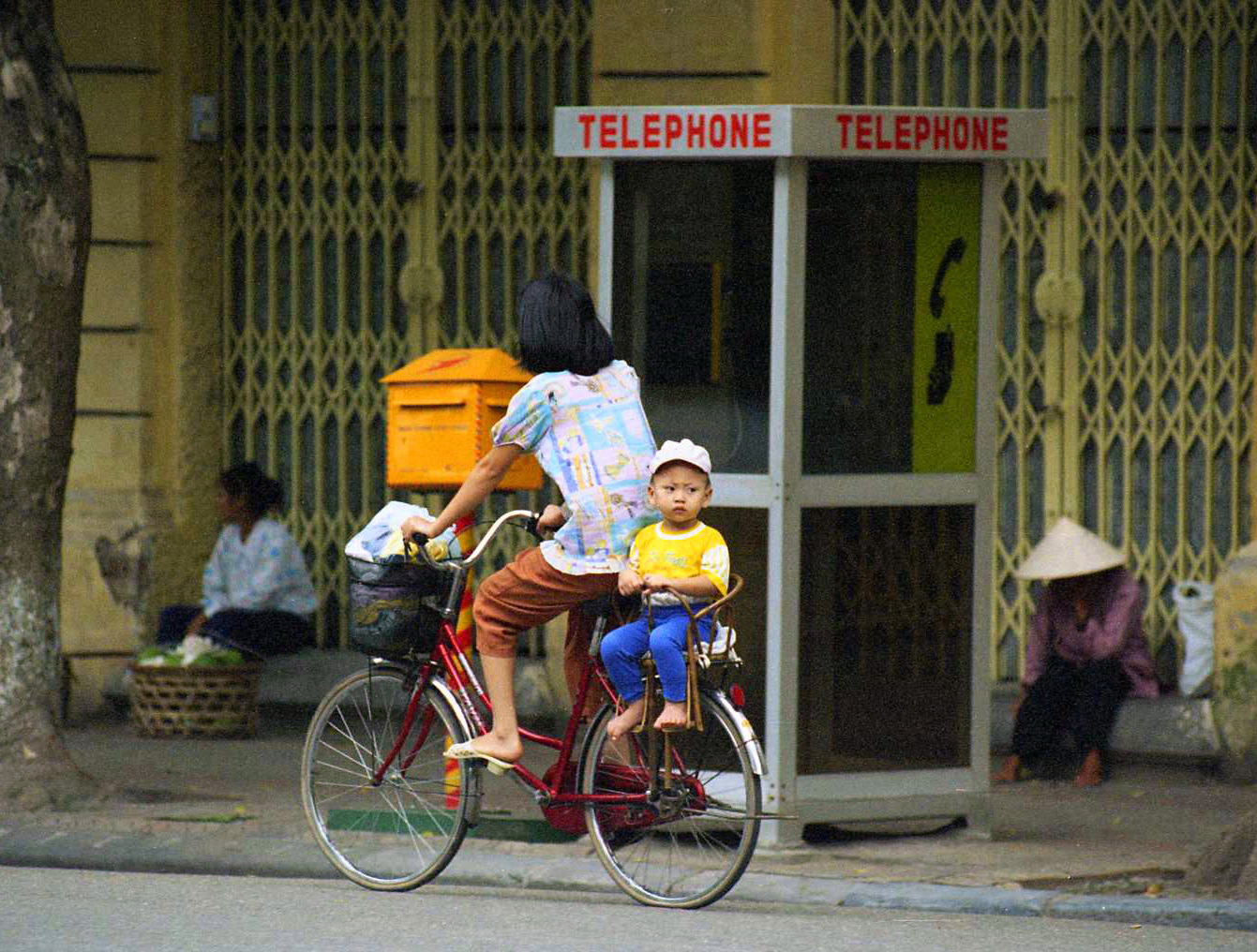 |
A cyclo driver on Hang Trong Street in August 1999. Kobayashi thought the man's stance was "really cool." This mode of transport was considered the "taxi" of Hanoi residents at the time. Photo: Yuichi Kobayashi |
The moment a mother cycled past on Trang Tien Street caught the photographer's lens in 1998. In the background is a public telephone booth, now completely gone. Kobayashi recalls that, at the time, people had to buy cards at the post office to make calls. Photo: Yuichi Kobayashi
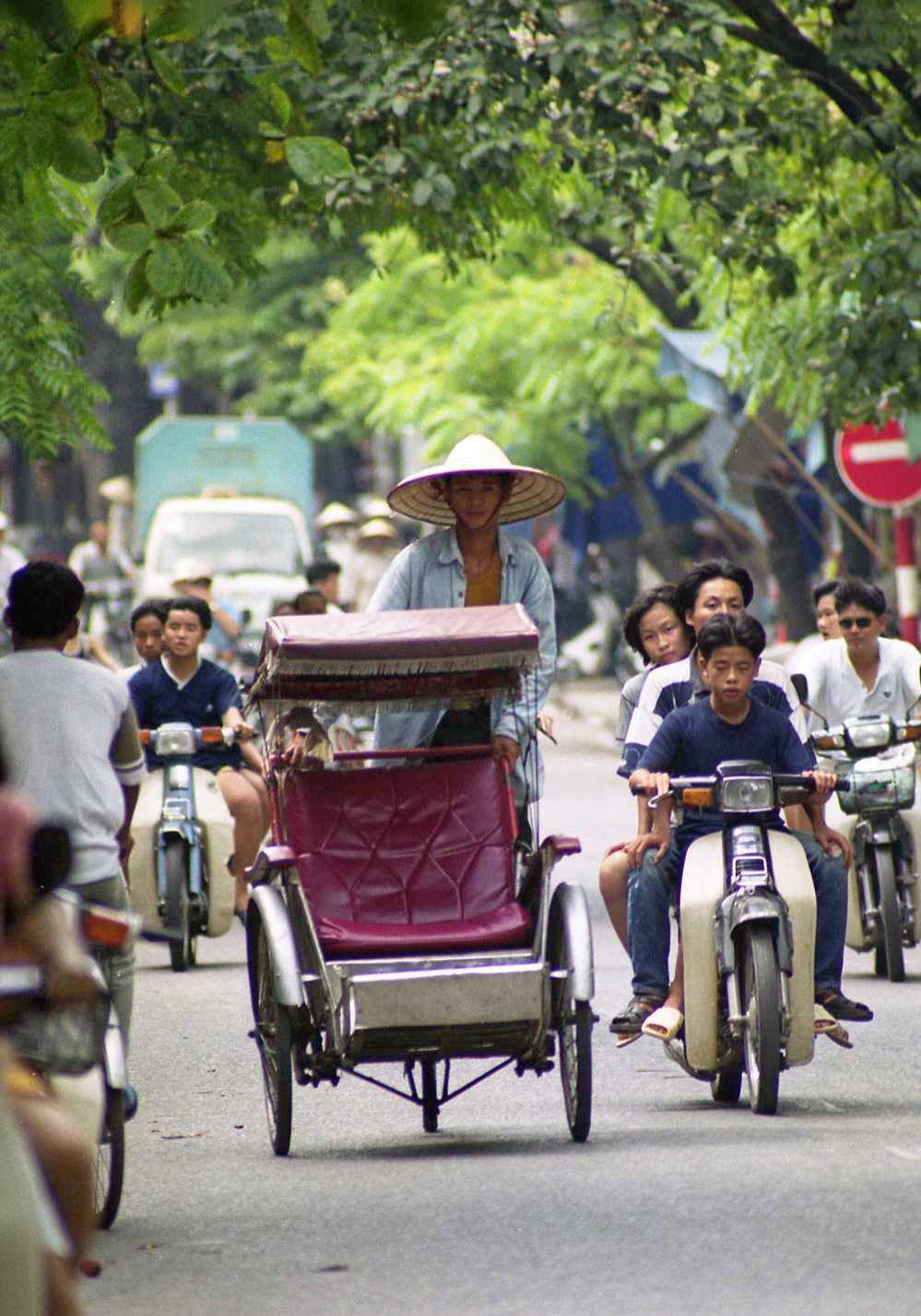 |
A portrait painting shop on Hue Street, near Hoan Kiem Lake, in 2/1998. The artist, dressed in a suit like an office worker, maintains a meticulous demeanor. In 2017, Kobayashi returned to photograph the shop, still in its original location. Photo: Yuichi Kobayashi |
A cyclo driver on Hang Trong Street in August 1999. Kobayashi thought the man's stance was "really cool." This mode of transport was considered the "taxi" of Hanoi residents at the time. Photo: Yuichi Kobayashi
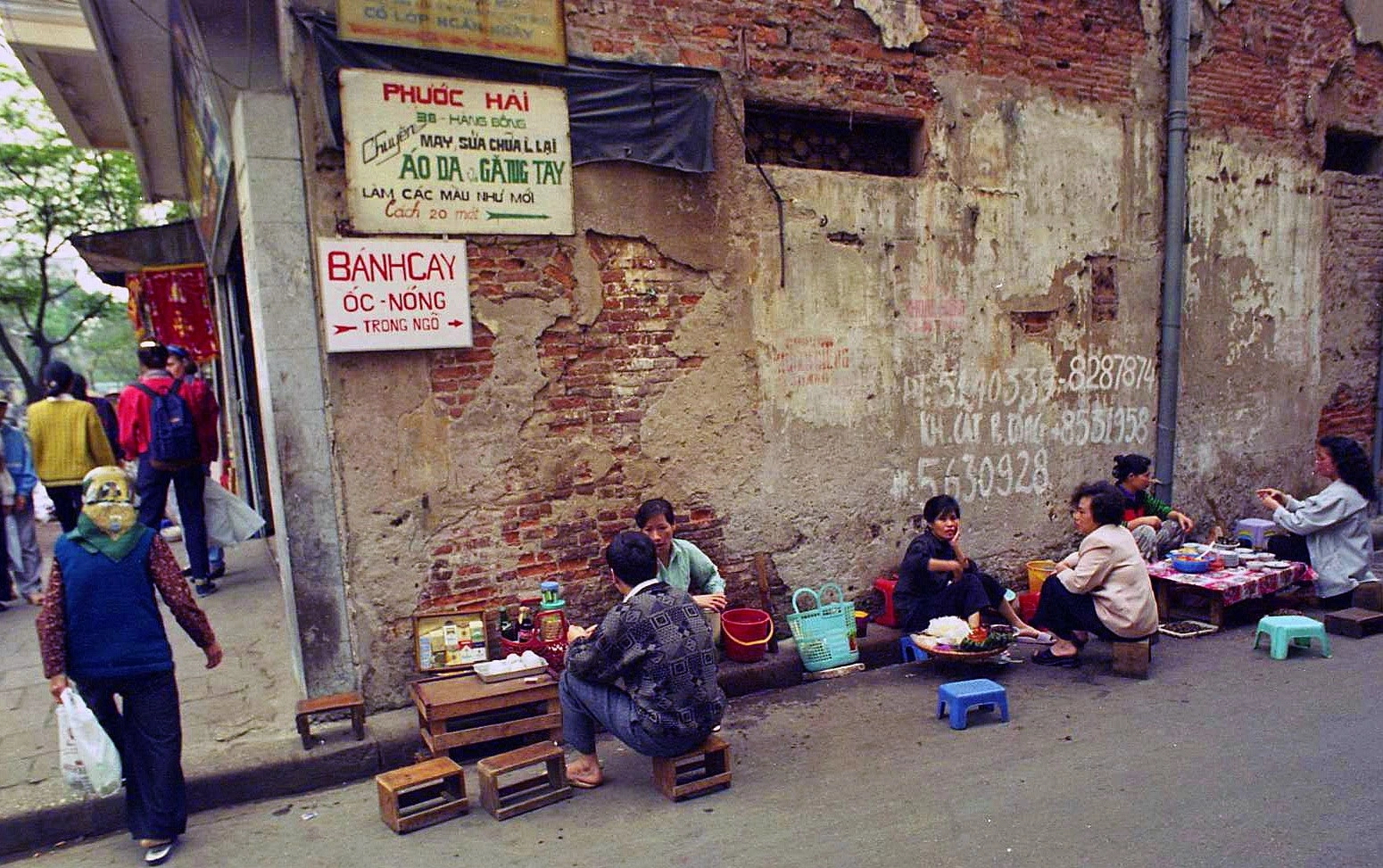 |
"I always admired the skill of motorbike taxi drivers when I saw them napping," he said. This photo was taken in 1998 in Trang Tien, showcasing a peaceful, quiet scene. Photo: Yuichi Kobayashi |
This photo captures sidewalk cafes selling drinks and food on Hang Bong Street in 1998.
Kobayashi says he enjoyed capturing everyday moments on the streets since his student days in Japan. Arriving in Hanoi, he was immediately captivated by the diverse life and culture of its people. "I became passionate about recording the city's various 'expressions'," he said.
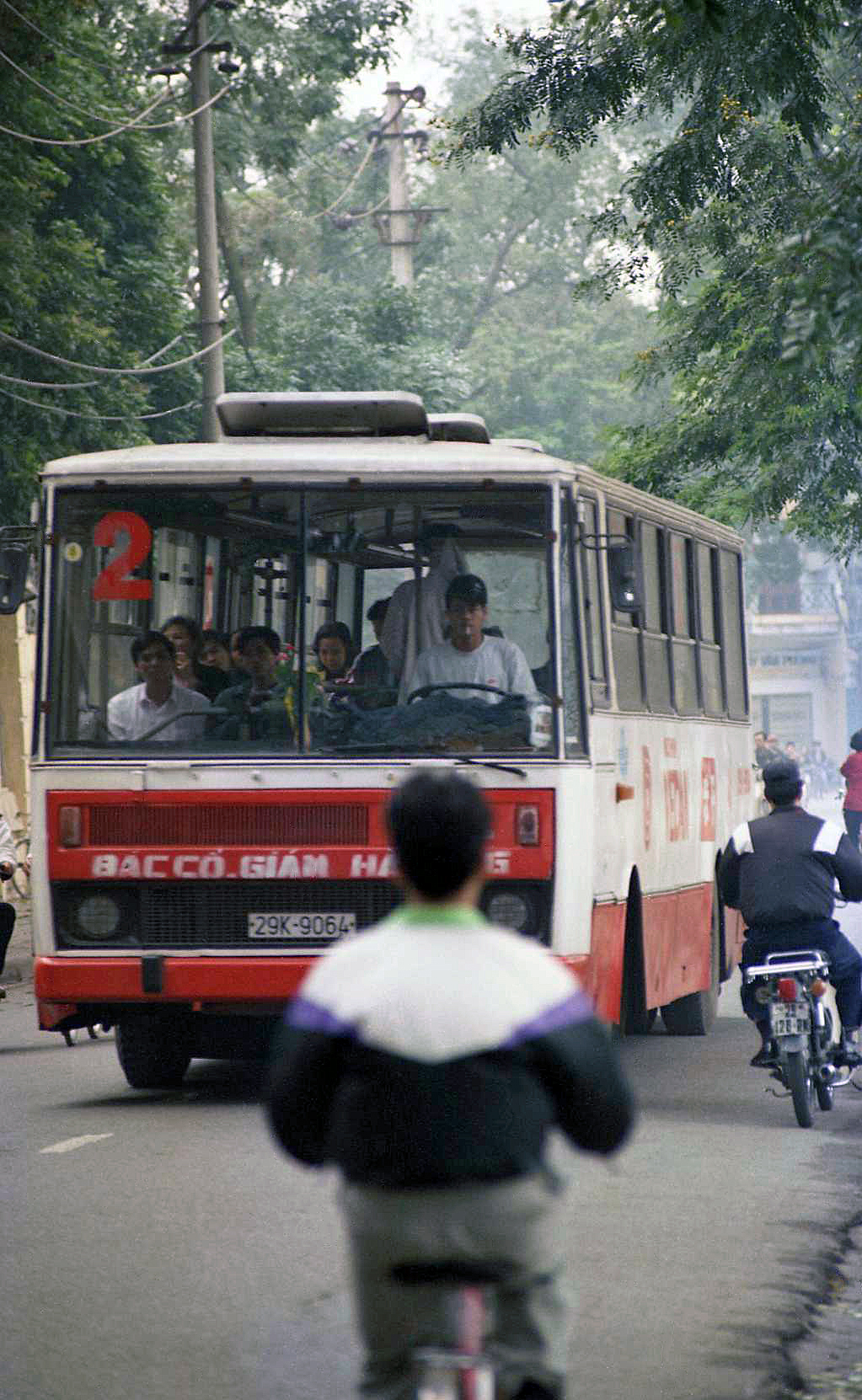 |
Trang Tien Street on a winter evening in 1998. "I remember it was an extremely cold winter," Kobayashi said. On the right side of the photo is a large bookstore. At the time, people mainly went to Trang Tien or Dinh Le to buy books. After shopping, they would enjoy ice cream at the nearby Trang Tien Ice Cream parlor. The ice cream parlor was especially crowded in the summer, with queues sometimes stretching halfway down the street. Photo: Yuichi Kobayashi |
A photo of a bus on Le Thai To Street in 3/1998.
In the 1990s, bus routes were infrequent and inconvenient. He remembers roads and public transport significantly improving around 2005.
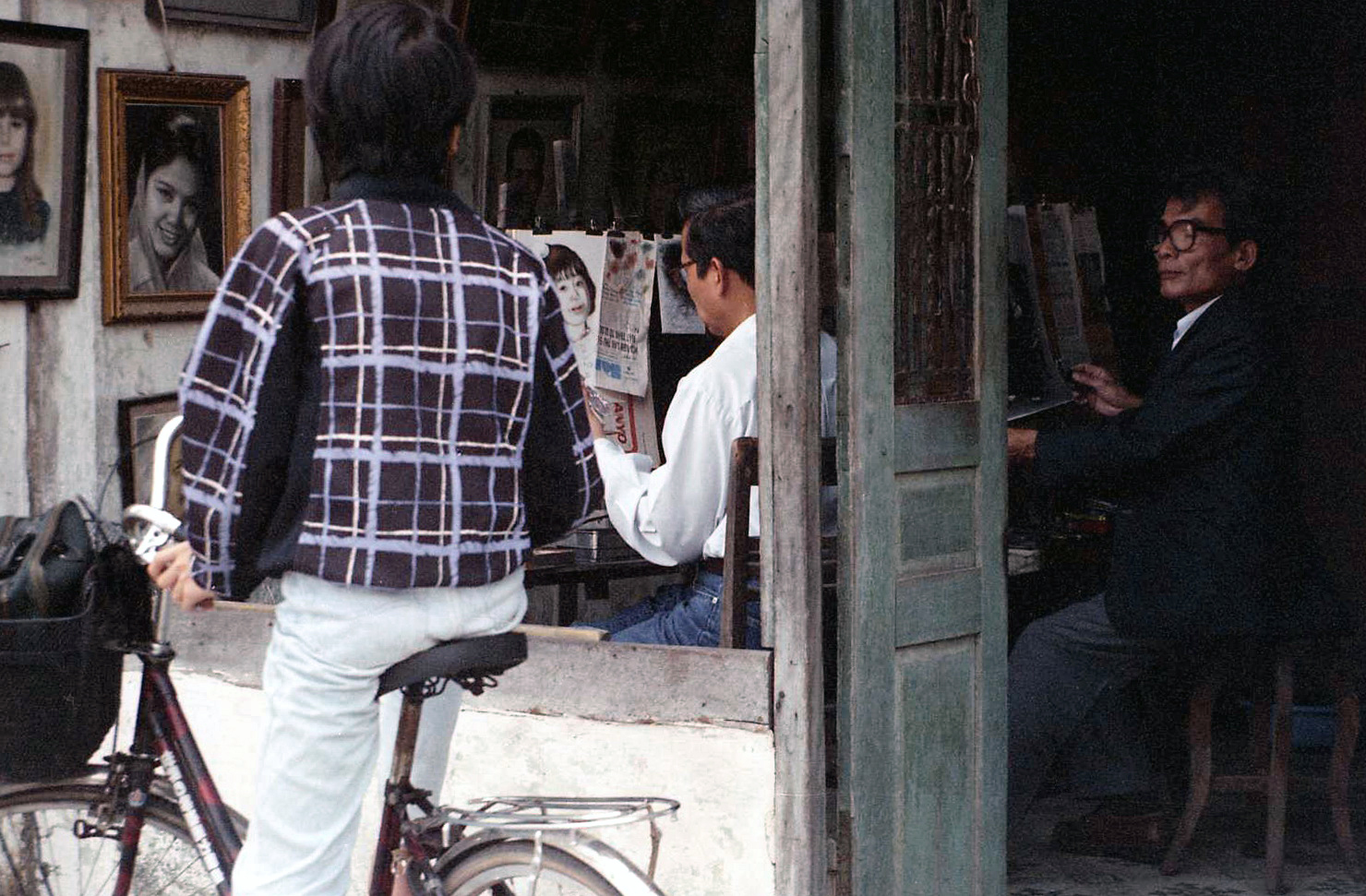 |
This photo was taken before Tet in 2007 on Dinh Le Street. Sidewalk barbershops were everywhere. "The barbers were working on prime real estate, 200 meters to the left was the Metropole Hotel, and 300 meters to the right was the Hanoi Post Office," Kobayashi noted. Photo: Yuichi Kobayashi |
A portrait painting shop on Hue Street, near Hoan Kiem Lake, in 2/1998. The artist, dressed in a suit like an office worker, maintains a meticulous demeanor. In 2017, Kobayashi returned to photograph the shop, still in its original location. Photo: Yuichi Kobayashi
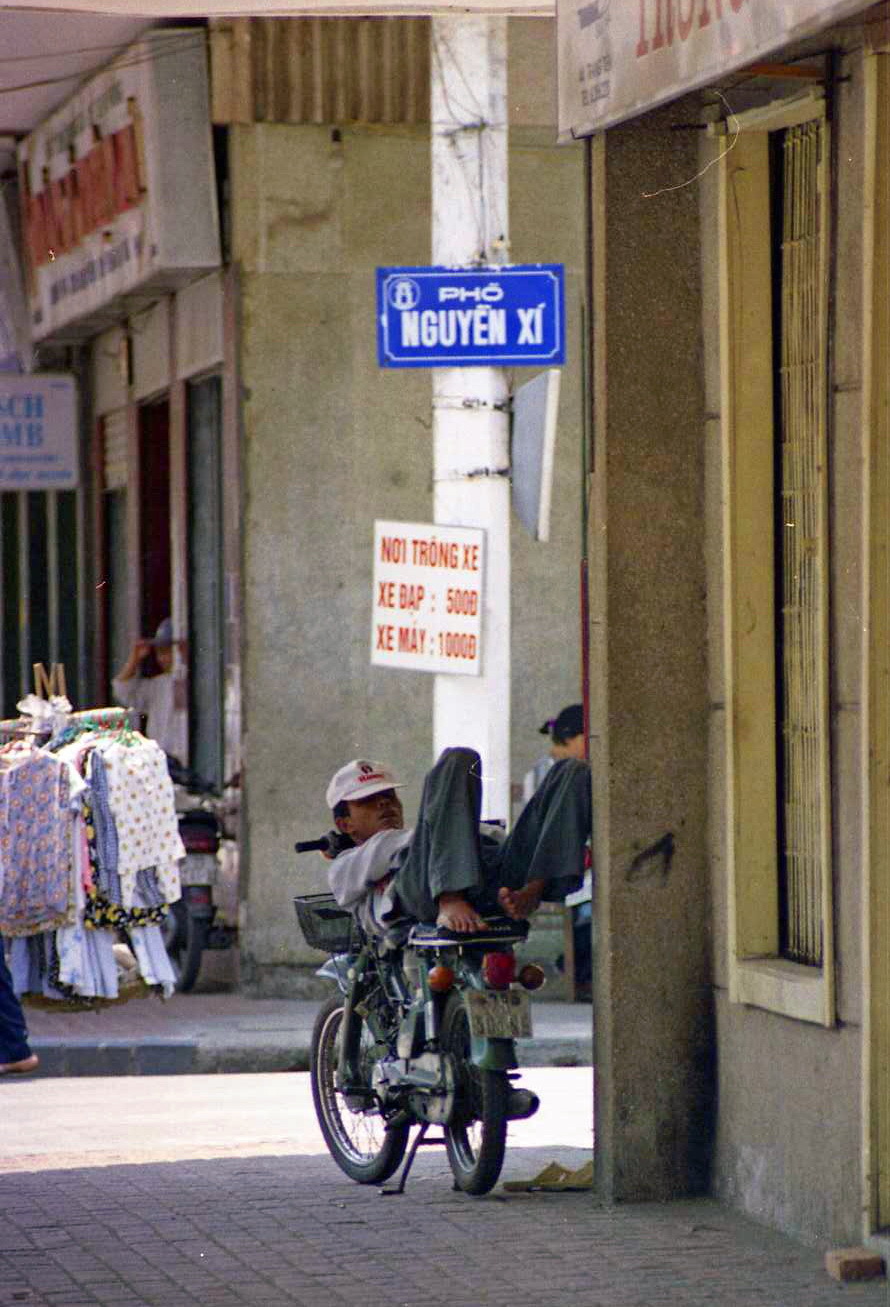 |
According to Kobayashi, Hanoi's old quarter still holds much nostalgia, and he appreciates both its past and present atmosphere. He doesn't know how the area will change in the future. The photographer says it's important to strike a balance so the old quarter "serves the lives of Hanoi residents, preserves its historical value, and welcomes tourists." Photo: Yuichi Kobayashi |
"I always admired the skill of motorbike taxi drivers when I saw them napping," he said. This photo was taken in 1998 in Trang Tien, showcasing a peaceful, quiet scene. Photo: Yuichi Kobayashi
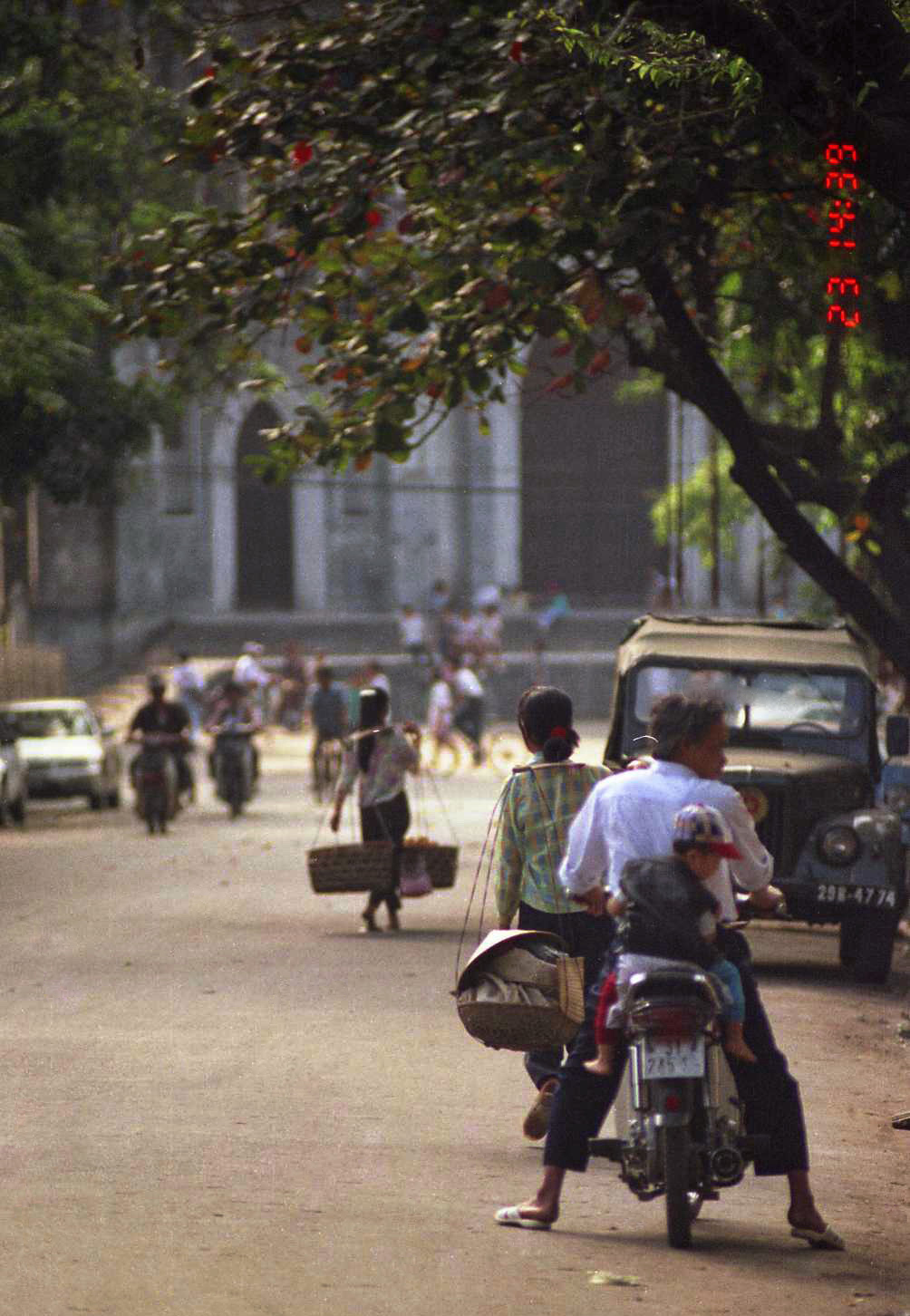 |
St. Joseph's Cathedral in 1997, almost devoid of tourists, with sparse traffic. The wide courtyard in front of the cathedral served as an ideal playground for children.
Kobayashi recalls that during this period, Hanoi lacked prominent tourist attractions. Ha Long Bay was nearby, but services were underdeveloped, and the 5-hour journey by road was inconvenient.
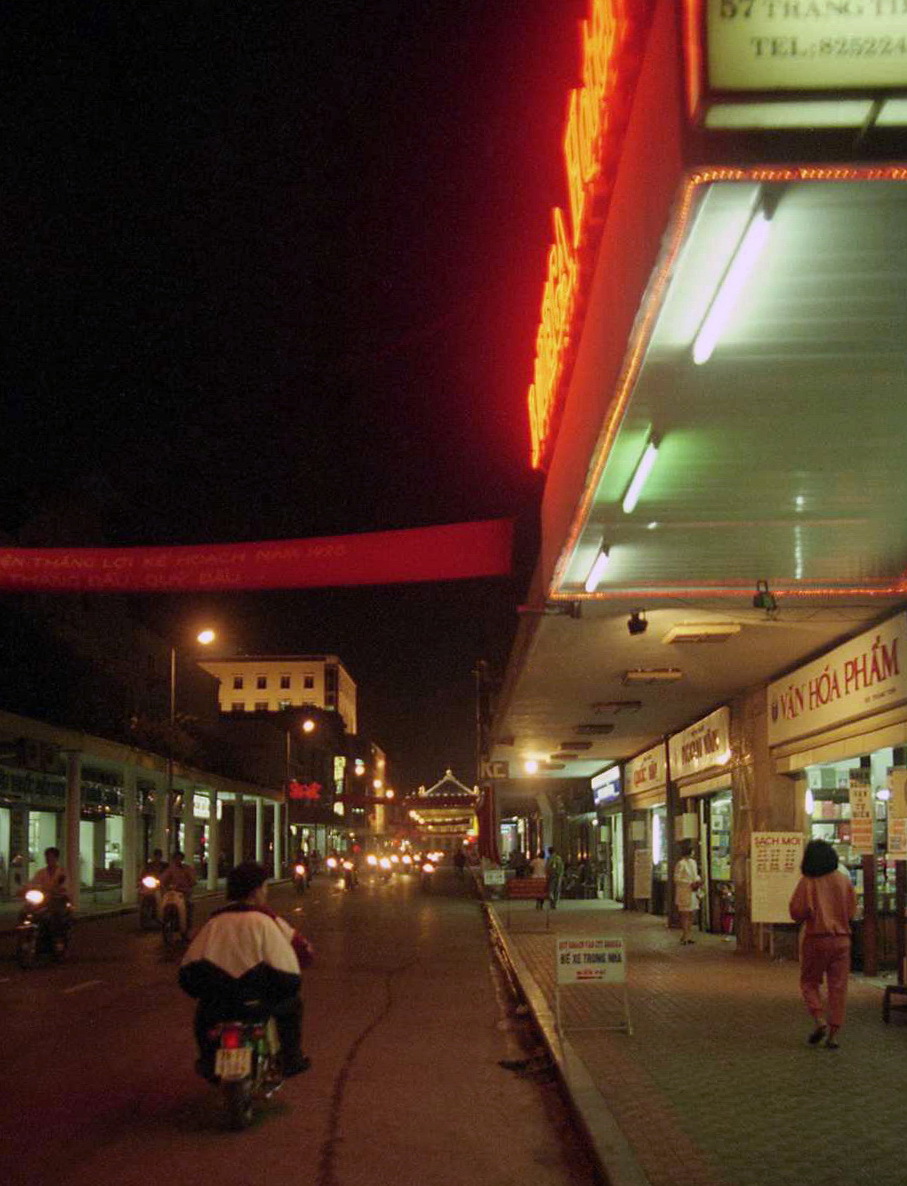 |
Trang Tien Street on a winter evening in 1998. "I remember it was an extremely cold winter," Kobayashi said. On the right side of the photo is a large bookstore. At the time, people mainly went to Trang Tien or Dinh Le to buy books. After shopping, they would enjoy ice cream at the nearby Trang Tien Ice Cream parlor. The ice cream parlor was especially crowded in the summer, with queues sometimes stretching halfway down the street. Photo: Yuichi Kobayashi
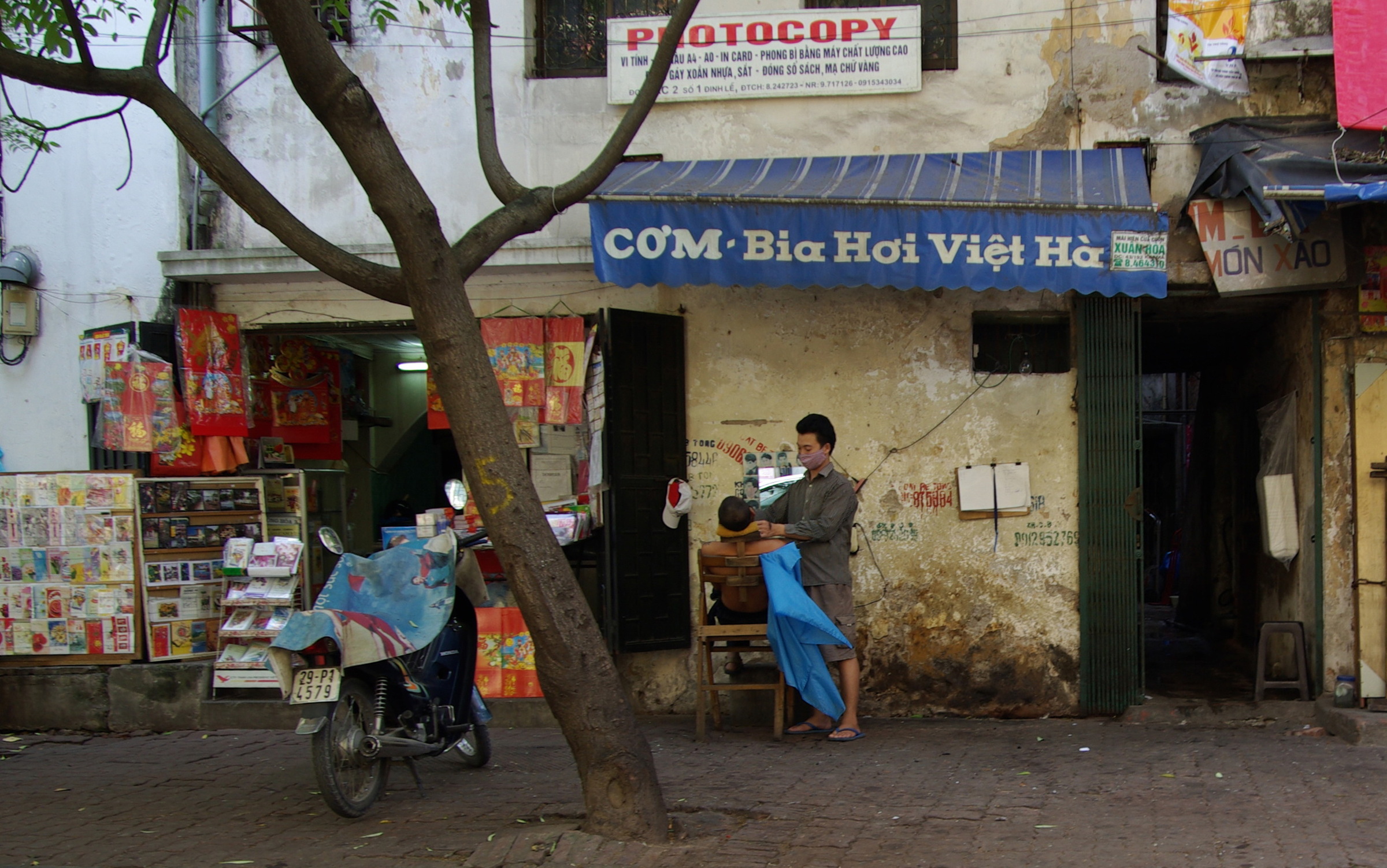 |
This photo was taken before Tet in 2007 on Dinh Le Street. Sidewalk barbershops were everywhere. "The barbers were working on prime real estate, 200 meters to the left was the Metropole Hotel, and 300 meters to the right was the Hanoi Post Office," Kobayashi noted. Photo: Yuichi Kobayashi
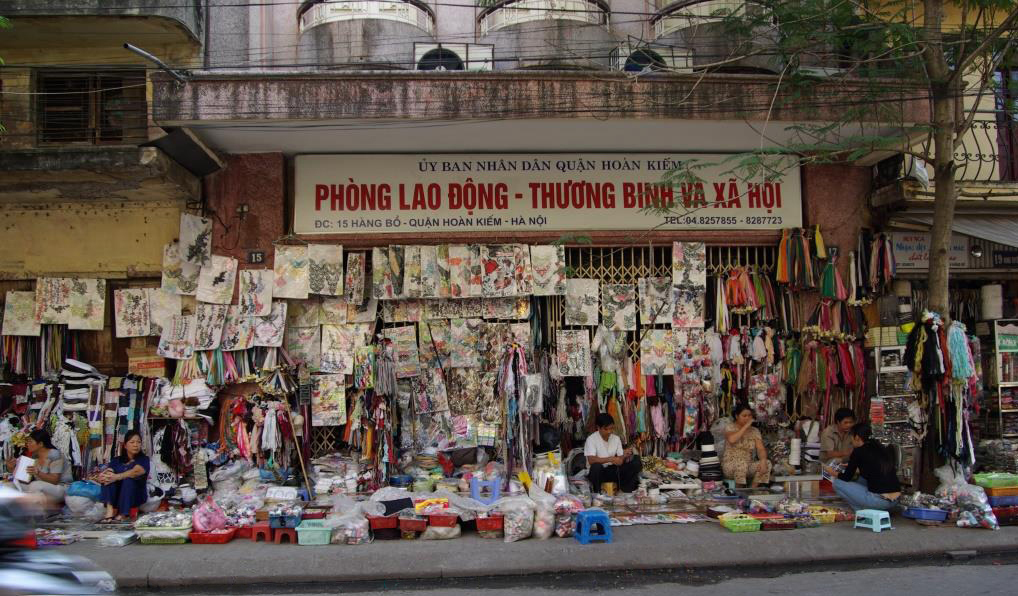 |
This photo was taken on Hang Bo Street in 2007.
On weekends, when offices were closed, stall owners would display their goods on the sidewalks, covering the iron doors. On Sunday evenings, they would clear everything away as if nothing had been there. Kobayashi found this contrast fascinating.
According to the photographer, Hanoi's old quarter began to transform in the 2000s. Hang Da Market, known for its handicrafts, was even featured in travel guides sold in Japan.
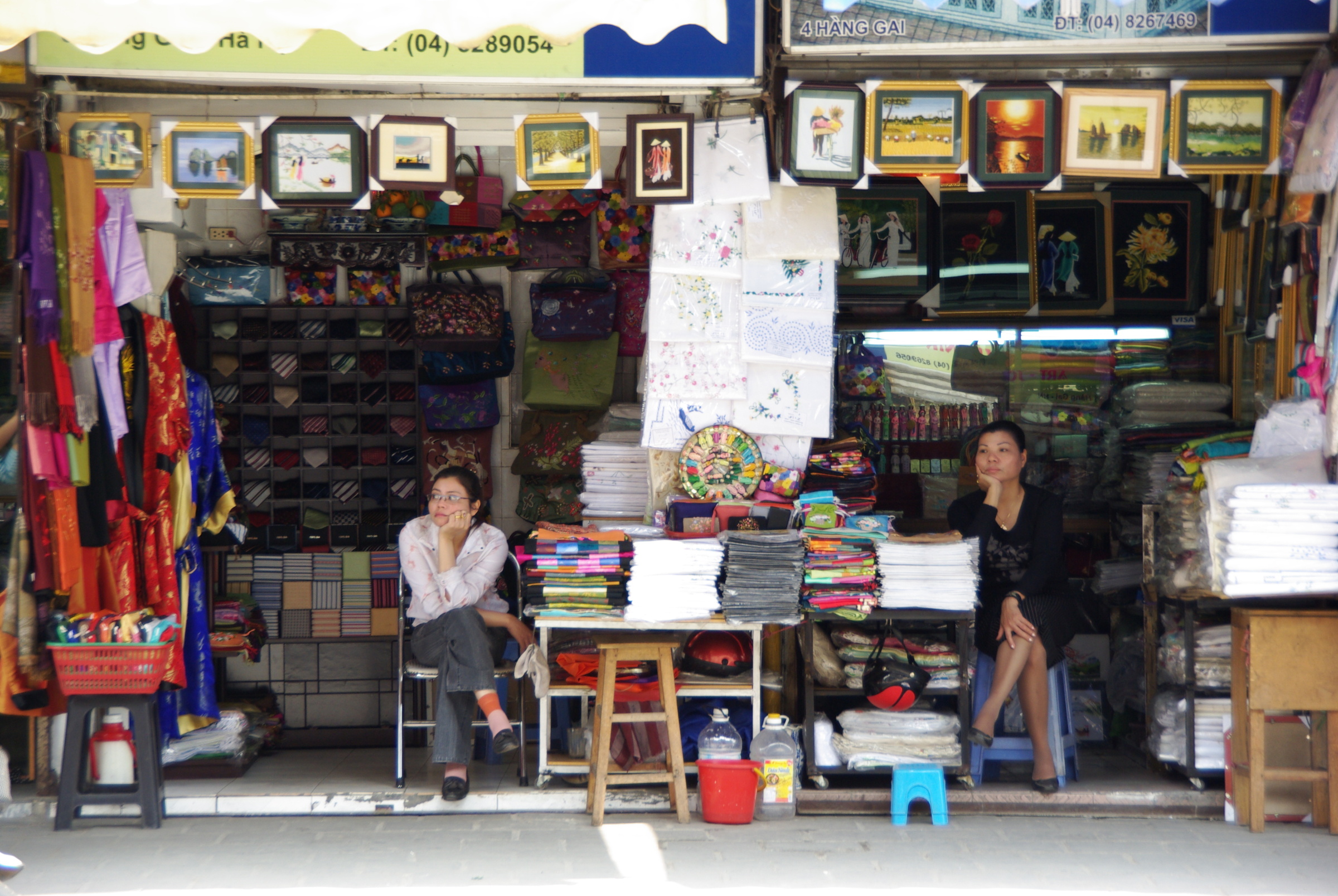 |
"Their cross-legged posture while waiting for customers was amusing," he said. This photo was taken in Hang Gai in 2008. Souvenir shops for foreign tourists began appearing on this street in the 1990s.
Kobayashi has preserved hundreds of photos of old Hanoi. He first posted them on his personal page about 7 years ago, but they received little attention. Recently, interest in old Hanoi has grown. "If possible, I'll consider publishing a photo book," he said.
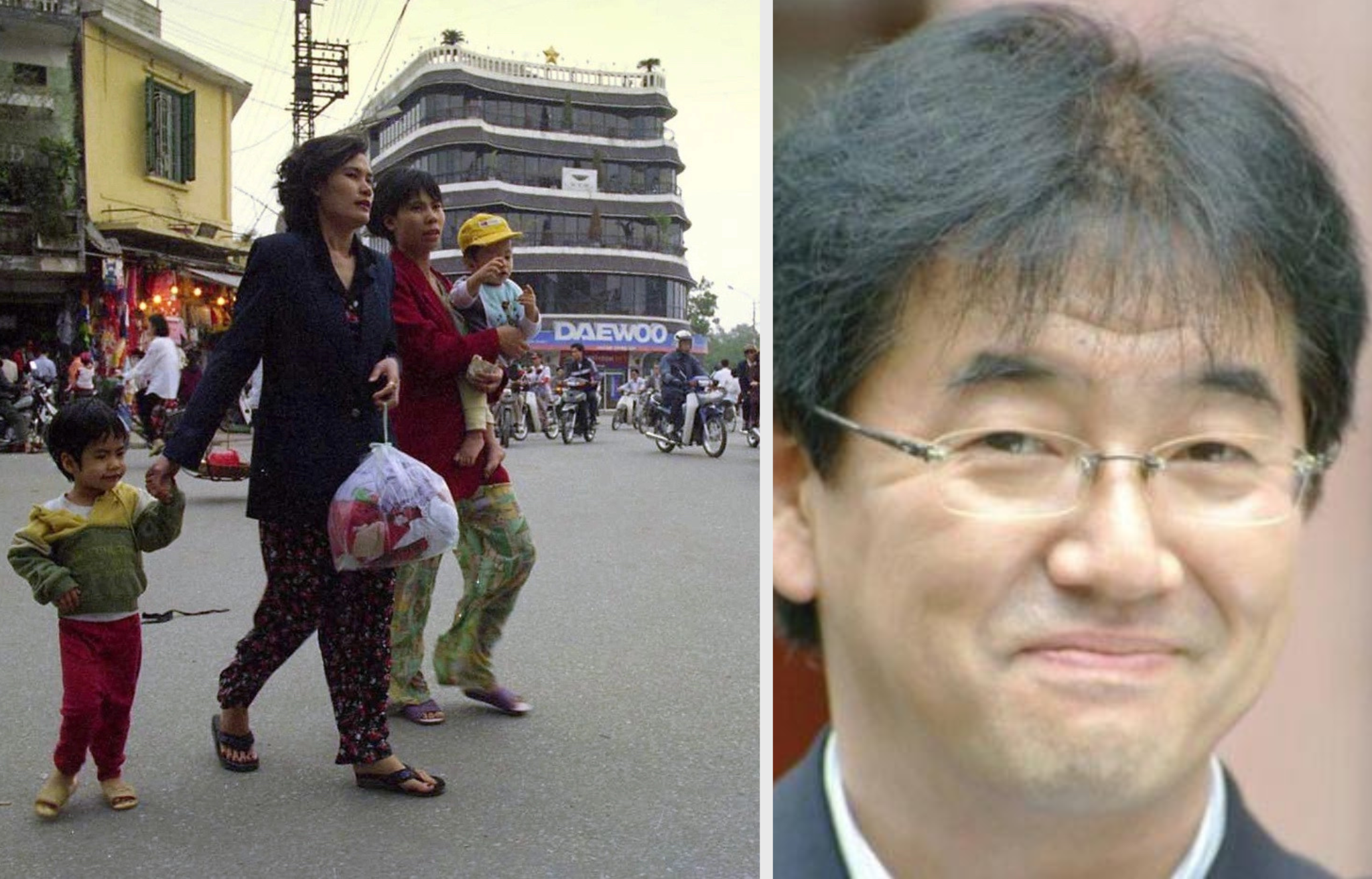 |
According to Kobayashi, Hanoi's old quarter still holds much nostalgia, and he appreciates both its past and present atmosphere. He doesn't know how the area will change in the future. The photographer says it's important to strike a balance so the old quarter "serves the lives of Hanoi residents, preserves its historical value, and welcomes tourists." Photo: Yuichi Kobayashi
Hoai Anh
Photos: Yuichi Kobayashi



